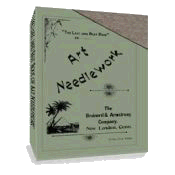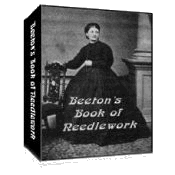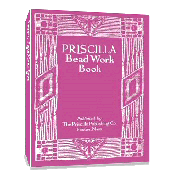Victorian Mirrors
When most of us think of Victorian mirrors, we often think of the massive ones that were placed above a mantel or between long windows. These usually had large and very ornate frames. Hand carved and made of expensive wood or gilded, these mirrors were often the main focus of the room.
Victorian placed these large mirrors in very strategic positions - usually to reflect a important architectural feature, a piece of expensive artwork or the outdoors. Decorators today often use this same technique, just not on the same scale as those in the Victorian era.
Smaller mirrors were often used throughout the Victorian home, also. One Victorian lady sums up quite well how most Victorian women felt about these mirrors: “The liking for looking at pretty things certainly must be strong when it extends to our mirrors, because we look at them so often! And yet that is the very reason why they should always be in gay attire.” And gay attire, they were! Mirrors were surrounded with frames adorned with embroidery or ribbon work or decorated with shells and other small items pasted directly on them. Victorian ladies who preferred to paint found that mirrors were wonderful to paint on. Decorating ideas were endless and Victorian women tried as many as they could think of.
This art form was so popular that the foundation for a mirror frame could be acquired at any of the shops that supplied artists' materials. Once purchased, the artist could then fasten decorative material or items to it.
A Victorian Mirror Frame
For You to Make
Below you will find the type of ideas and instructions you would find in books and magazines around 1890 for decorating a small mirror. Although the following instructions are for a mirror they could be used, of course, to make a wonderful Victorian picture frame as well.
Decorative Frame for a Victorian Mirror

The frame illustrated above is covered with dark blue plush, upon which are dogwood blossoms and leaves in white and olive plush, appliquéd with yellow floss. The effect is charming - one wants to look in a mirror that reflects Spring always. This is hung in diamond fashion, bows of satin ribbon of the blue tone being placed just where they seem to hold the pretty flowers in position. While any colored velvet or plush is in taste, still it will be quickly understood by those who have studied decorative effect, why the preference is given to a dark tone - one does not weary of it, as would be the case with a faint tint. White plush is cut in the outlines indicated by Diagram A for the dogwood flowers, the heavy, light and dotted lines showing the three sizes employed. Olive plush is used for the leaves, which are shaped by Diagram B, in which also the outer line follows the largest size, the next the medium one, and the dotted line the smallest, so that each size may be exactly obtained. Care must be taken in cutting them, and a very sharp pair of scissors will be found of use.

Application Stitch for Decoration on Mirror.

Painting mirrors caught on quickly, not only because it was an alternative to embroidery, but because it was quick and easy. Below are instructions for such a mirror.
Ornamental Victorian Mirror
The Victorian mirror below has considerably more frame than glass in its composition, the proportions being regulated, however, with a view to producing a very unique effect.
The bird and butterfly may be of any variety which the artist admires.
Very beautiful mirrors framed and decorated in this fashion are seen in ladies' boudoirs, and one that is especially worthy of being pronounced artistic has a design of wild roses and clematis painted upon a dark back-ground that gradually lightens into a sky-blue toward the top and gracefully fades into a cloudy mist. A flight of swallows flying downward, as if about to light upon the mass of bloom adds animation to the effect.
Return to top of Victorian Mirrors page.
Return to Victorian Crafts page.
Return to Home page



 433 pages!
433 pages!

